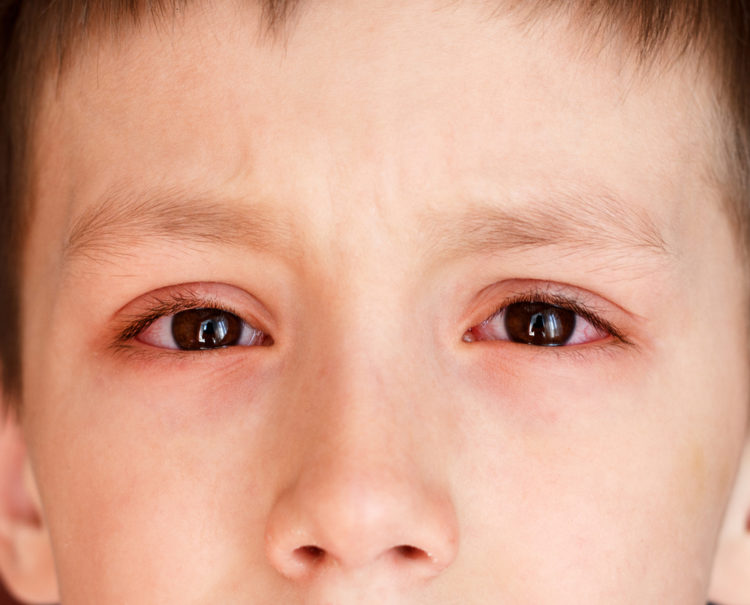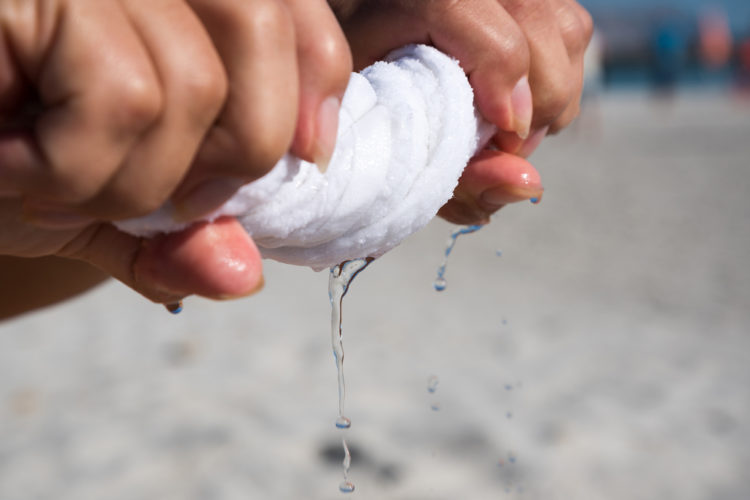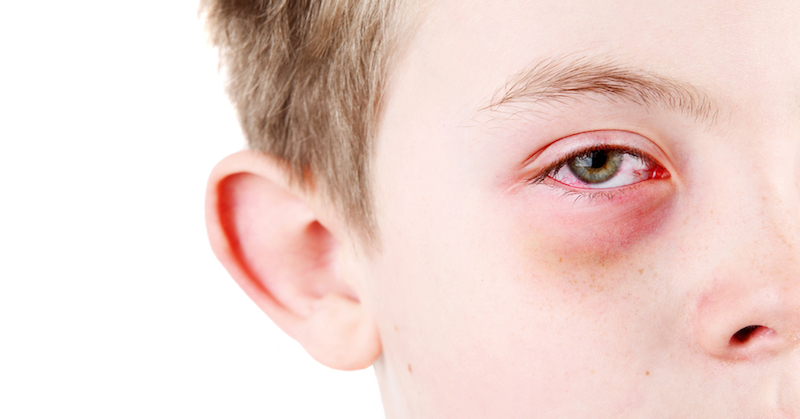Pink eye is known to doctors as bacterial conjunctivitis. It’s a very common ailment in both adults and children and is generally not a threat to long-term health.
However, proper treatment is crucial – especially in children. Improper treatment can lead to recurring pink eye cases that become increasingly resistant to treatment.
Newborns are particularly at risk for pink eye and ensuing complications that lead to serious health damage.
What are signs of pink eye in children?

The most common symptom is discomfort in the eye. Many children suffering from pink eye complain that it feels like their eye is filled with sand.
You will also, of course, notice redness in your child’s eye and inner eyelid. Pink eye also causes a discharge that can result in your child’s eyelids being stuck together when they wake up.
In the case of an infant, you may notice frequent tears and gooey discharge around the eyes.
When you first notice that your child has pink eye, take all necessary steps to ensure that your child’s pink eye does not spread to others.
Not all types of pink eye are contagious. For example, those caused by allergies or environmental irritants are isolated. But before you can get your child to the doctor to confirm what form of pink eye he or she has, assume the case is contagious and take the following precautions:
- Wash your child’s hands regularly with warm water and soap.
- Do not share anything that could have touched your child’s eye, such as a towel or pillowcase.
- Anything worn by your child while they have pink eye should be washed separately from all other laundry in hot water.
Once you’ve consulted with your child’s doctor and received a diagnosis of pink eye, he or she will likely be prescribed antibiotic eyedrops along with steroid eyedrops.
While these two types of medication will likely prove helpful for reducing the inflammation of pink eye, they can produce uncomfortable side effects.
If said side effects are of concern to you, ask your doctor if one of the following natural treatment options might be suitable for your child’s case.
1. Raw Organic Apple Cider Vinegar

Apple cider vinegar is an antibacterial substance that will help speed up your child’s pink eye recovery.
It’s important that you use organic apple cider vinegar to avoid introducing harsh pesticides and chemicals into your child’s eyes.
Instructions:
- Add one quarter teaspoon of apple cider vinegar to half a cup of distilled water.
- Use an eyedropper to place a drop of the mixture on your child’s eyes several times daily.
- You can also apply a drop to your child’s eyelid and then have him or her blink repeatedly.
There will be a slight, temporary sting when the apple cider vinegar hits your child’s eye.
2. Activated Charcoal Powder

Activated charcoal powder has been successfully used to treat entire third world villages suffering from rampant pink eye.
Its popularity for this purpose is due to the anti-fungal, anti-viral and antibacterial properties of activated charcoal.
Instructions:
- Mix one teaspoon of activated charcoal powder into half a cup of water.
- Strain this mixture through a coffee filter.
- Place two drops of the filtered water in your child’s eyes several times throughout the day.
3. Black Tea Bags

Black tea contains tannins that can reduce inflammation and itching in your child’s eyes. The bioflavonoids in black tea will also combat infections.
Instructions:
- Boil water and pour just enough over a tea bag to moisten it.
- Once the tea bag has cooled, place it over your child’s eye for 5-10 minutes.
- Repeat this process at least three times daily.
4. Cold (Or Warm) Compress

A cold compress will work more efficiently, but if your child is uncomfortable with the method, a warm compress can also be used to achieve notable results.
- Wet a towel with cold water and squeeze it out until it is damp.
- Fold the towel and place it in a plastic bag.
- Freeze the bag and towel for 15 minutes.
- Remove the towel from the bag and place it on your child’s eye. Repeat this throughout the day as needed for relief.
- Soak a towel or washcloth in warm water.
- Wring the towel out and place it on your child’s eye.
Sources:
WebMD (1)
WebMD (2)
Live Strong
MyBestRemedies.com
CharcoalRemedies.com
BabyCenter.com
KidsHealth.org


